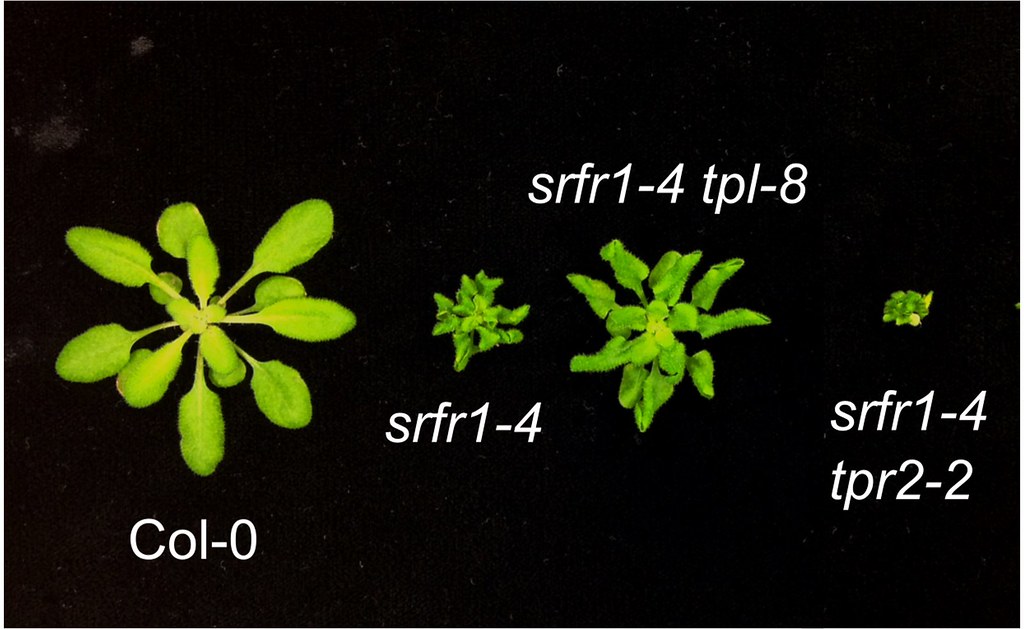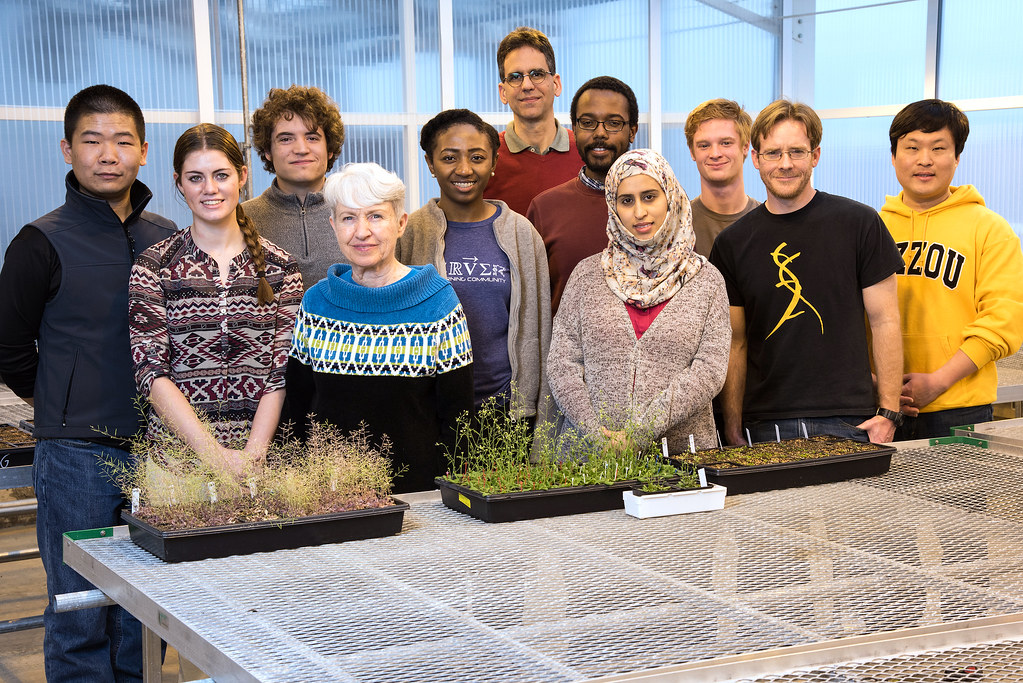News
Defense or growth: a complicated balance

By Lauren Hines | Bond LSC
The plant immune system isn’t active all the time. Plants must decide to either defend against disease or grow, but not simultaneously.
The reason behind this process is not fully understood, and the Walter Gassmann lab at Bond Life Sciences Center is searching for answers.
The lab recently found a link between members of the TOPLESS gene family, the immune receptor SNC1 and a negative regulator SRFR1. The relationship revealed when members of the gene family are absent in a plant, the immune system intensifies, and growth is stunted. The findings were published in February in the journal PLoS Genetics.
“As scientists, we try to simplify a model but sometimes the more we know, the more complicated we realize it to be,” said Jianbin Su, a research scientist in the Gassmann lab.
The study focused on TPR2 and TPR3, two genes within the TOPLESS family.
After studying these two genes, Gassmann said they did not act as he expected when partnered with SNC1. It turns out the genes act as “brakes” so then the immune system doesn’t go on forever.
“If you were to keep stimulating a plant with pathogens, you would see reduced growth over the long term,” said Gassmann, director of Bond LSC. “Plants have to balance whether they grow or if they defend, but we can artificially remove genes in the repertoire of a plant so that the immune system is on all the time from the get-go, and that manifests itself as stunted growth.”
This balance is the main obstacle facing researchers who want to increase crop yield and resistance to disease. Technically, researchers could increase the level of resistance in plants today but increasing the defense system often costs too much growth and yield.
Instead, the Gassmann lab proposes to modify the natural regulation of the plant’s immune system and bypass artificially increased resistance like pesticides.
“In the end, we would like to be able to generate crop plants that are more resistant to a wide swath of pathogens once we understand their regulatory system better,” Gassmann said.

Now, all the Gassmann lab needs to do is figure out how the system works. Easier said than done.
However, there are theories as to why the plant must choose between growth and defense. Previous theories believe there isn’t enough energy for plants to defend and grow at the same time. Gassmann said the theory doesn’t make a lot of sense to him. Even though the plants at Bond LSC are “pampered” and live in a “luxurious environment,” they stop growing whenever their immune systems are stimulated.
“I think evolutionarily, it is an advantage for plants to have a genetic circuit that makes them decide whether to grow or to defend themselves,” Gassmann said. “So, it’s not an energy limitation. It is genetic pathways that we can study to understand how that recognition works. And if there’s a genetic circuit, then we can tweak it and improve on it.”
Even with these theories, there’s more to this system than just genetics. While TPR2 and TPR3 interact with the immune receptor SNC1 and a negative regulator SRFR1 — a molecule that puts a stop or pause on a cellular process — that doesn’t mean their proteins interact in the cell.
“In terms of protein-protein interaction, many people think, ‘Oh it’s just as we interact physically,’ but actually, the cell is alive,” Su said. “In microscopes, they are moving. Sometimes the protein interaction needs a trigger to induce the protein-protein interaction.”
This interaction at the protein level still needs to be further analyzed, but it can explain why both SRFR1 and TPR2 must be absent for the plant to stop growing and be smaller.
“We think they actually work at different points in the circuit, and that’s why you get an additive effect on plant growth,” Gassmann said. “We’d be really interested to find out what those points are exactly, so there’s always more work to be done.”
While the Gassmann lab has found a new interaction revealing a bit more of the plant immunity process, there is still more to understand.
“Knocking out SRFR1 causes smaller plants, but the more accurate mechanism is still, I think, largely unknown,” Su said. “These genetic interactions with TPR2 are just one part of SRFR1 as a negative regulator in plant immunity.”